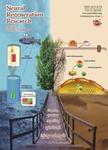Changes of plasma C-reactive protein in patients with craniocerebral injury before and after hyperbaric oxygenation: A randomly controlled study
Changes of plasma C-reactive protein in patients with craniocerebral injury before and after hyperbaric oxygenation: A randomly controlled study作者机构:Department of Neurosurgery Second Affiliated Hospital Medical College of Shantou University Shantou 515041 Guangdong ProvinceChina Department of Laboratory Second Affiliated Hospital Medical College of Shantou University Shantou 515041 Guangdong ProvinceChina Department of Hyperbaric Oxygen Second Affifiated Hospital Medical College of Shantou University Shantou 515041 Guangdong Province China
出 版 物:《Neural Regeneration Research》 (中国神经再生研究(英文版))
年 卷 期:2007年第2卷第5期
页 面:314-317页
核心收录:
学科分类:1002[医学-临床医学] 100210[医学-外科学(含:普外、骨外、泌尿外、胸心外、神外、整形、烧伤、野战外)] 10[医学]
主 题:craniocerebral trauma hyperbaric oxygenation C-reactive protein Glasgow Coma Scale
摘 要:Changes of plasma C-reactive protein in patients with craniocerebral injury before and after hyperbaric oxygenation: A randomly controlled study BACKGROUND: Plasma inflammatory factor, such as C-reactive protein, whose content is regarded as a sensitively pathological marked protein and quantitative indexes of central nervous system injury, has been paid more and more attention in clinic. OBJECTIVE: To observe the effects and clinical significance of C-reactive protein in patients with craniocerebral injury after hyperbaric oxygenation. DESIGN: Randomized controlled study. SETTING: Departments of Neurosurgery, Laboratory and Hyperbaric Oxygen, the Second Affiliated Hospital, Medical College of Shantou University. PARTICIPANTS: A total of 60 patients with craniocerebral injury were selected from Department of Neurosurgery, the Second Affiliated Hospital, Medical College of Shantou University from October 2006 to April 2007. There were 37 males and 23 females and the mean age was 26 years. All subjects were certainly diagnosed as history of craniocerebral injury. Patients hospitalized at 24 hours after injury, Glasgow Coma Score ranged from 3 to 12 points, and all patients were certainly diagnosed with CT or MR scanning. Patients and their relatives provided confirmed consent. All the subjects were randomly divided into hyperbaric oxygenation group and control group with 30 in each group. METHODS: Patients in the control group were treated with routinely neurosurgical therapy after hospitalization; however, based the same basic treatment in the control group, patients in the hyperbaric oxygenation group received hyperbaric oxygenation by using iced-wheel four-door 2-cabin air-compression chamber (made in Yantai) from 24 hours to 10 days after operation or injury. After entering the cabin, patients who had a clear consciousness breathed the oxygen by using face mask; contrarily, patients directly breathed the oxygen. Therapeutic project: Expression was increas



